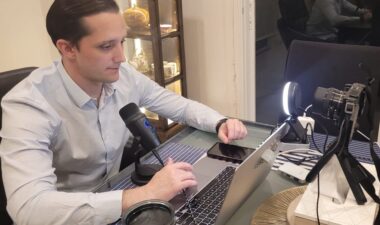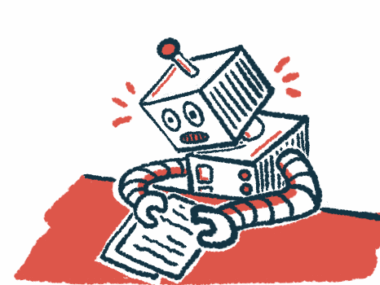This Rare Disease Day, let’s become change-makers
On this day of rare disease awareness, we can move from observer to participant
Written by |

This Rare Disease Day, I spent time reflecting on the future of our community. Will all the hashtags and sharing of our stories on social media translate into results, or is all of this in vain? The answer I’ve settled on is that it matters a lot.
In December 2018, my wife and I discovered that our daughter had been born with a rare disease known as aromatic l-amino acid decarboxylase (AADC) deficiency. In February 2019, we didn’t even know Rare Disease Day existed. We were still scrambling to comprehend what had just happened to our world.
In the following years, from 2020 to 2022, we joined the day’s activities as viewers. We listened and attended some events, but it wasn’t until this year that we began to move from the sidelines to actual players.
The more we became involved in making change, the greater the results for our daughter. We found a purpose and discovered that we could help make a difference in the lives of others. What got me thinking about this Rare Disease Day was all the parents who took the potential for their child’s future into their own hands.

Other caregivers and events related to AADC deficiency motivated us to push for change for the rare disease community. (Courtesy of Richard E. Poulin III)
Caregivers creating solutions
Ivana Badnjarević, whose daughter has the rare disease tyrosine hydroxylase deficiency, created a nonprofit organization for children suffering from neurotransmitter diseases. Today, she is also an executive board member at the International Working Group on Neurotransmitter Related Disorders, along with a plethora of other projects she supports.
Judith Julia Justin, whose son was diagnosed with a rare genetic mutation called NACC1, began her career in a multinational branding agency. However, she took decisive action when she learned that her son had an incurable disease. She became certified in physiotherapy and innovative therapies and traveled the world learning about future breakthroughs. She founded Wings Therapy and Learning Center, Singapore’s first and only intensive therapy center.
Kelly Heger, whose daughter has AADC deficiency, didn’t think twice about becoming a registered nurse to better care for her daughter. She also established the AADC Family Network, which provides charity and education for the families of AADC deficiency children. Her medical background has given our community an edge in having a leader who can speak medical jargon and understand the U.S. healthcare system.
The New York Times reported on Karen Aiach, whose daughter has Sanfilippo syndrome. Aiach quit her consulting job and founded a company that focuses on developing gene therapies for rare central nervous system disorders.
If those aren’t enough examples, just look into the community that makes up Bionews, the parent company of this website. Bionews owns and operates dozens of media websites dedicated to rare and chronic diseases. Each of these websites, and many of the people who help the company on the backside, are also members of the rare disease community. They make a difference at the company and through their own personal initiatives.

During Rare Disease Day 2023, Richard Poulin III hosts his own event for caregivers after spending previous years as a listener. (Courtesy of Richard E. Poulin III)
Transition to becoming a change-maker
All of the folks I mention in this column are caregivers of children with a rare disease or patients themselves who wanted to make a difference. Today, they support other families in the rare disease community. I hope their stories inspire others connected to the rare disease community to create change, because they certainly inspired my family.
This Rare Disease Day, and every day after, share your story, include the hashtag #raredisease in your social media posts, and find ways to take action. We may not see the results of the work we do today, but I believe our solutions will come from within. As we create awareness about the rare disease community in the rest of the world, we inspire our community to develop the solutions we seek.
Note: AADC News is strictly a news and information website about the disease. It does not provide medical advice, diagnosis, or treatment. This content is not intended to be a substitute for professional medical advice, diagnosis, or treatment. Always seek the advice of your physician or other qualified health provider with any questions you may have regarding a medical condition. Never disregard professional medical advice or delay in seeking it because of something you have read on this website. The opinions expressed in this column are not those of AADC News or its parent company, Bionews, and are intended to spark discussion about issues pertaining to aromatic l-amino acid decarboxylase deficiency.







Leave a comment
Fill in the required fields to post. Your email address will not be published.